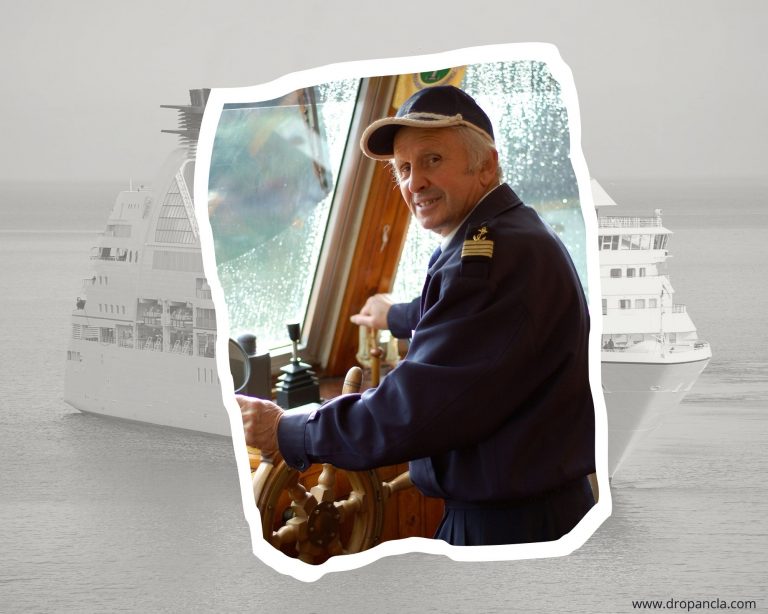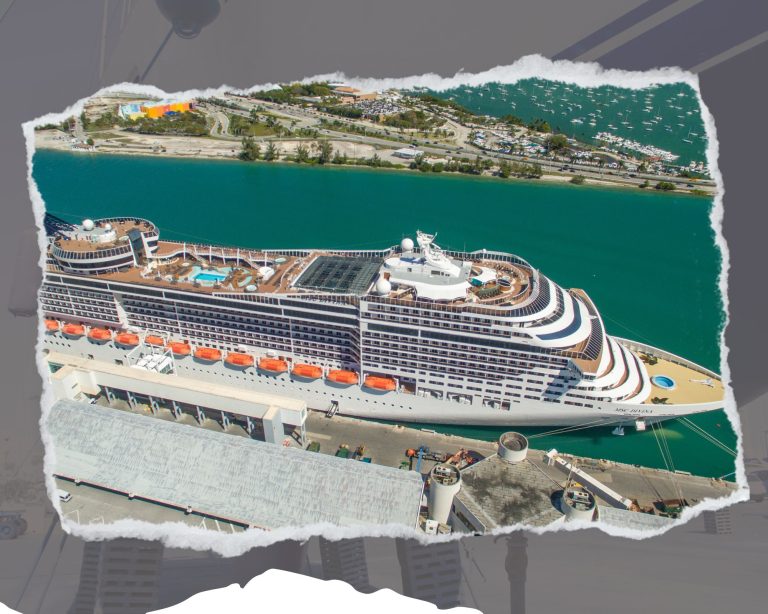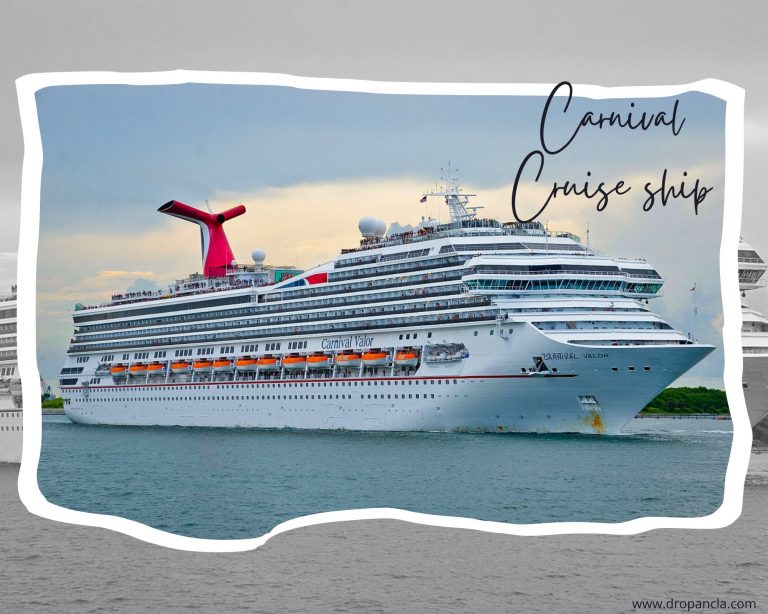Are Cruise Ships Bad For The Environment? – Truth Unveiled!
Scientists and environmentalists have warned us for years about the excessive pollution that the growing global vehicle population produces. And with good reason—the world’s passenger vehicles have a significant role in climate change. Although cruise ships pose a more substantial threat and are just as destructive as road car pollution, they receive far less attention. Are cruise ships bad for the environment?
Let us find out.

Are cruise ships bad for the environment?
The world’s most giant cruise ships are traveling across the ocean, emitting millions of times more pollution than an average car. The cumulative impact of this small group of floating luxury resorts is more than that of all the vehicles in the world. This article will discuss how unbelievably toxic the cruise industry is.
Cruise ships and the environmental damage
Is a cruise environmentally friendly?
Letus begin by reviewing some numbers.
According to the EPA, the average car emits roughly 4.6 metric tons of carbon dioxide annually. It is based on an annual mileage assumption of 11,500 miles and 22 miles per gallon fuel efficiency. A yearly global output of 4 billion 600 million metric tons of carbon dioxide is obtained by multiplying that emissions figure by the estimated 1 billion cars currently on the road.
Quite a bit of pollution, that.
However, now, passenger cars are a significant cause of worry. The daily emissions from an average cruise ship can be up to 1,000,000 times greater than those from an average car.
Pollution caused by fuel is far worse
Do cruise ships harm the environment?
As we all know, carbon dioxide is a powerful warming agent, but it is only one component of the picture.
Nevertheless, it is the pollutant that receives the most attention. However, some compounds are rarely even permitted to be used in land vehicles because they harm the environment and human life.
One such substance is heavy fuel, a byproduct produced following the production of gasoline and diesel. Despite having a far higher sulfur concentration than other fuels, heavy fuel is more economical. Naturally resulted in its employment in large, fuel-hungry ship engines. For instance, the Harmony, a Royal Caribbean ship, has two four-story-tall 16-cylinder engines that burn roughly 1,400 gallons of fuel per hour, or about 66,000 gallons per day—not of standard gas or diesel but of some of the worst fuels ever created.

Adverse effects on the environment continue further even while docked
How polluting are cruises?
To understand how harmful the pollution from these engines is, consider the need for these engines when moored. Cruise ships must utilize low-sulfur fuel or so-called abatement technologies when in port. In more precise terminology, the aim is to stop the ship from leaking some of the worst contaminants. These actions, however, fall short.
Do cruises cause pollution?
Just read this story!
A local environmental group has been established in Southampton due to the enormous ships that frequently land there. They have witnessed how toxic their surroundings have become over the years. According to the inhabitants, the wind spreads the city’s pollutants throughout, which has caused a worrying rise in cancer and respiratory ailments. As far as they are aware, cruise companies do not keep track of the pollutants and how they impact the area. Southampton Clean Air, an activist group, has pushed for the ships to switch to shore power. But the companies have declined.
Specialists analyzed the impact
Specialists from Germany and Brussels have examined such boats. They found that a single cruise ship in port must consume at least 150 tons of gasoline daily. In addition, they would produce more particle pollutants and Sulphur than thousands of public buses and several million cars combined. Up to five of these enormous ships can be in port at Southampton, Britain’s busiest cruise ship terminal. Southampton is one of nine U.K. cities that the World Health Organization has identified as violating air quality standards. Although they don’t do much manufacturing, the large ships that ply their coast are what cause the pollution.
Do cruise ships dump their waste in the ocean?
The volume of waste that they produce is comparably large. To make matters worse, attempts to reduce these vessels’ adverse effects on the environment and people have mostly fallen short. Nothing keeps cruise ships from discharging harmful fumes from so-called emissions cheat systems. On international waters, they release hundreds of thousands of gallons of sewage, wastewater from sinks, showers, galleys(greywater), hazardous wastes, solid wastes, oily bilge water, ballast water, and air pollution.
You can read in detail about the daily waste streams a typical cruise ship generates.
More damage to the world…
Cruise ship systems wash and scrub impurities off inexpensive fuel, and this hazardous waste is subsequently thrown into the ocean to save money on disposal costs. These activities significantly contribute to the extinction of marine habitats and the alarming emission of sulfur and nitrogen oxide. When sulfur is combined with water and air to make sulfuric acid, it not only bleaches coral reefs and suffocates marine life but also showers down on cities and forests, causing deforestation and health issues.
If interested, you can read more about the consequences of pollution on the environment.
Is there no one to govern cruise ships?
The waste streams of cruise ships are subject to many national and international laws, regulations, and standards, such as the Clean Water Act and the Act to Prevent Pollution from Ships. Still, no single legislation or law governs them all.
If you are curious, you can refer in detail to international protocols governing cruise ships.
Rules and regulations to prevent pollution
Environmentalists question the effectiveness of current regulations for handling these pollutants and claim that enforcement is insufficient. California, Alaska, and Maine have enacted state-specific cruise ship pollution laws, and other states have negotiated voluntary cruise ship discharge management agreements with the industry.
The 110th Congress (S. 2881) introduced legislation to control bilge water, gray water, and sewage discharges from cruise ships on a national level. This book describes the numerous waste streams that cruise ships may emit and discharge. It lists the extensive set of national and international legislation that deals with cruise ship pollution.
Read more about regulations and their efficiency in regulating waste streams.
Is cruising more environmentally friendly than flying?
The carbon footprint of a cruise ship is greater than that of air travel mile for mile. Long-haul aircraft produce 0.257 kg CO2 per passenger mile, while cruise ships produce 0.43 kg.
Statistics from a case study
According to a 2011 case study of cruise ships in Dubrovnik, Croatia, the average amount of CO2 released by a medium-sized, 3,000-passenger cruise ship per mile was 1,639 pounds, or.74 metric tons, or nearly the same as a roundtrip economy flight from London to Tokyo. According to that estimation, a roundtrip cruise from Orlando, Florida’s Port Canaveral to Nassau, Bahamas, a popular 350-mile transatlantic route frequented by Royal Caribbean International, Carnival, and Norwegian Cruise Line, would result in approximately 1 million pounds (434 metric tons) of carbon emissions per person.
In the economy class of a passenger aircraft, the same roundtrip trip from Orlando International Airport to Nassau’s Lynden Pindling International Airport would only add 368 pounds. The International Civil Aviation Organization’s carbon emissions calculator estimates that each person emits two metric tons of CO2. That includes carbon emissions; NOx or any other gas is excluded.
Someone can make a case for ships as greener modes of transportation than airplanes. However, slower-moving ships with onboard water parks and golf courses will likely always beat airplanes in terms of greenhouse gas emissions.

Conclusion
Are cruise ships bad for the environment?
People compare them to floating cities, with cruise ships carrying thousands of passengers and crew. The cruise industry contributes more than $32 billion in benefits yearly and more than 330,000 jobs in the U.S. economy. Still, it also raises concerns about the environmental effects of its operations among many people.
Cruise ships create significant environmental damage that has threatened ecosystems and jeopardized human health. Cruise ships need a big makeover as the search for cleaner renewable energy progresses.







